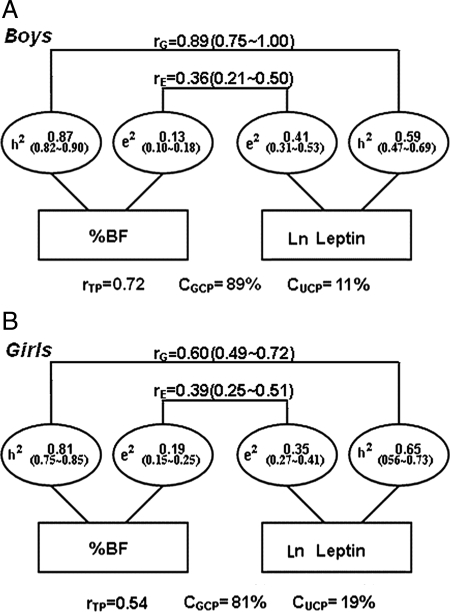Figure 3.
A, Genetic and environmental contributions to leptin-%BF association in 218 male adolescent twin pairs adjusted with age and Tanner stages. AE model was the best-fitting model for the bivariate analyses of %BF and leptin in males; rG, and rE denoted genetic and unique environmental correlations, respectively; a2 and e2 denoted percentage of total phenotypic variance accounted for genetic factors and unique environmental factors; rTP, total phenotypic correlation; CGCP, genetic contribution to total phenotypic correlation; CUCP, unique environmental contribution to total phenotypic correlation. B, Genetic and environmental contributions to leptin-%BF association in 243 female adolescent twin pairs adjusted with age and Tanner stages. AE model was the best-fitting model for the bivariate analyses of %BF and leptin in females; rG, and rE denoted genetic and unique environmental correlations, respectively; a2 and e2 denoted percentage of total phenotypic variance accounted for genetic factors and unique environmental factors; rTP, total phenotypic correlation; CGCP, Genetic contribution to total phenotypic correlation; CUCP, unique environmental contribution to total phenotypic correlation.

